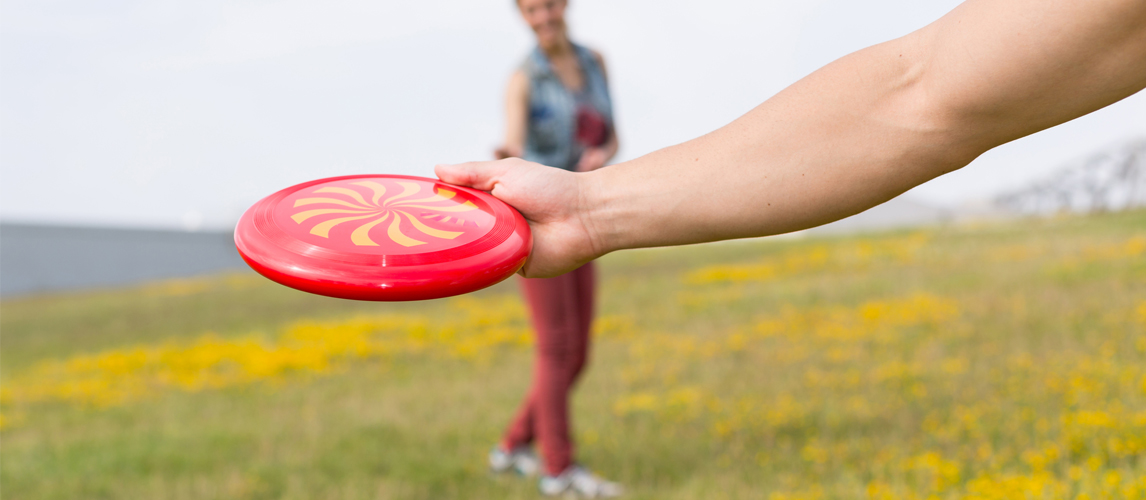Tags
Arthur Melin, catch, flying saucer, Frisbee, Frisbee Golf Tournament, Frisbie Baking Company, International Frisbee Association, Morrison slope, National Toy Hall of Fame, pie plates, plastic, Pluto Platter, Richard Knerr, Toys, Ultimate Frisbee, university students, Walter Morrison, Warren Franscioni, Wham-O
Frisbee (1948)
The Frisbee story starts in college. Late 19th-century students at Yale and other New England universities played catch with pie plates (some say it was cookie tin lids) made by the nearby Frisbie Baking Company of Bridgeport, Connecticut. They yelled “Frisbie!” to warn passersby away from the spinning discs. In 1948, Walter Morrison and his partner Warren Franscioni created a plastic version to sell at county fairs. The airfoil at the outer edge, called the Morrison slope, gives the toy its lift in flight. Hoping to cash in on the fascination with UFOs after the 1947 sightings in Roswell, New Mexico, Morrison called his creation the “Flying Saucer,” then the “Pluto Platter.” Wham-O founders Arthur “Spud” Melin and Richard Knerr (creators of the Hula Hoop) bought rights to the toy in 1955, and renamed it “Frisbee” in 1958. Sales soared, reaching 100 million before Mattel bought out Wham-O. Early in the 1960s, people treated the flying disc as a counterculture sport. Wham-O’s first “professional” Frisbee followed in 1964. Enthusiasts founded the International Frisbee Association in 1967, and the next year, the Frisbee Golf Tournament began in California. New Jersey teenagers later invented Ultimate Frisbee, a game played enthusiastically today. The Frisbee was inducted into the National Toy Hall of Fame in 1998.

